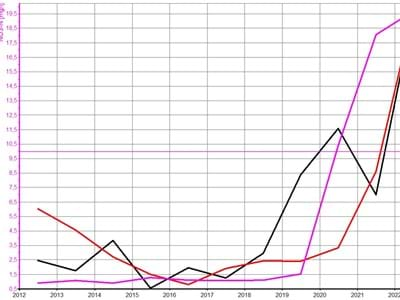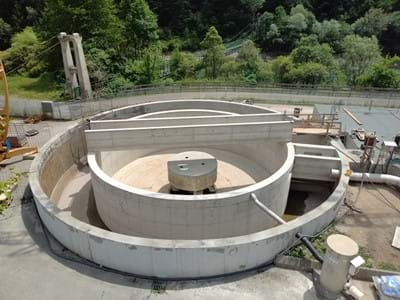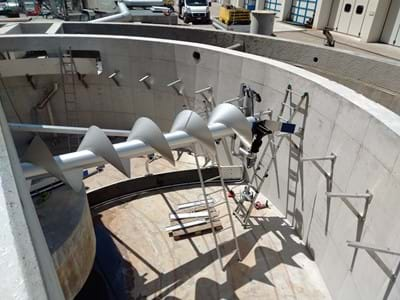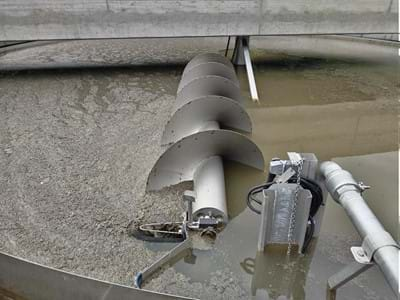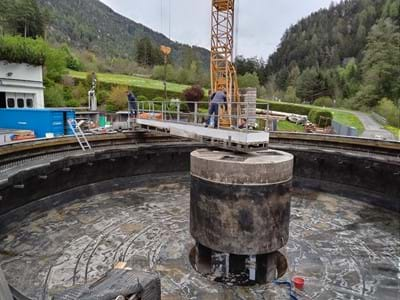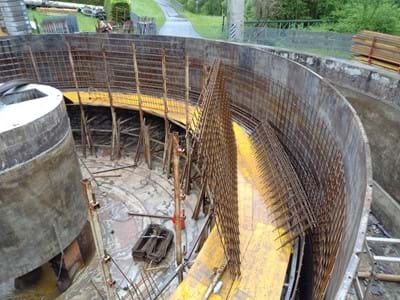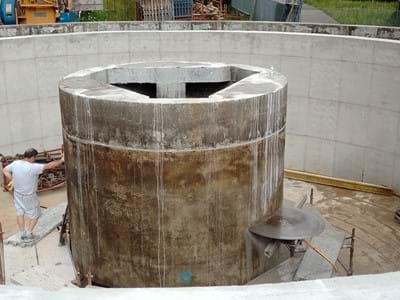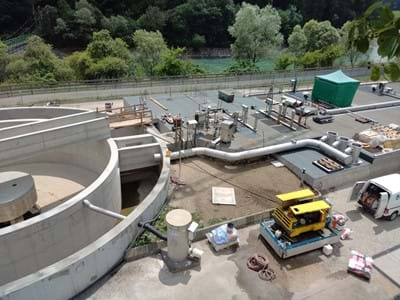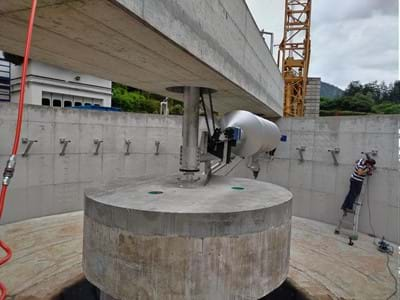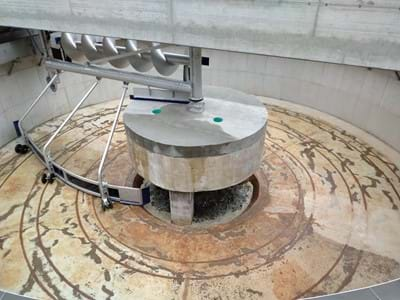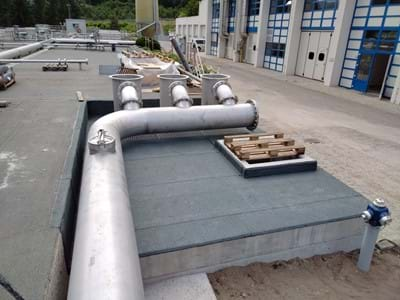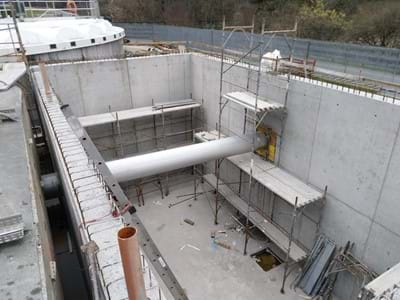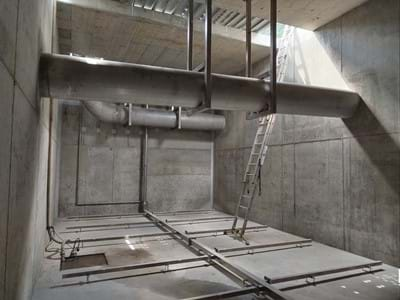Changed wastewater loads at the Lower Puster Valley WWTP
In recent years, the inflow load of the Lower Puster Valley WWTP has risen sharply. The increase in the number of guest beds and new industry has also led to an increase in the loads in the inlet of the Lower Pustertal WWTP. The high concentration of nitrate-nitrogen (NO3-N) in particular has caused problems (20 mg/l annual average).
At these NO3-N values, some of the nitrate is already broken down into molecular nitrogen (N) by special microorganisms (denitrifiers) in the pre-treatment stage. This nitrogen outgasses and prevents the actual function of the pre-treatment. This is where the heavier substances should actually settle and be removed from the wastewater. However, the resulting nitrogen gas bubbles settle in the sludge and this sludge then floats instead of settling. The result is a higher load and energy consumption in the biology and less gas yield.
